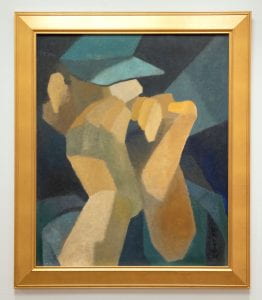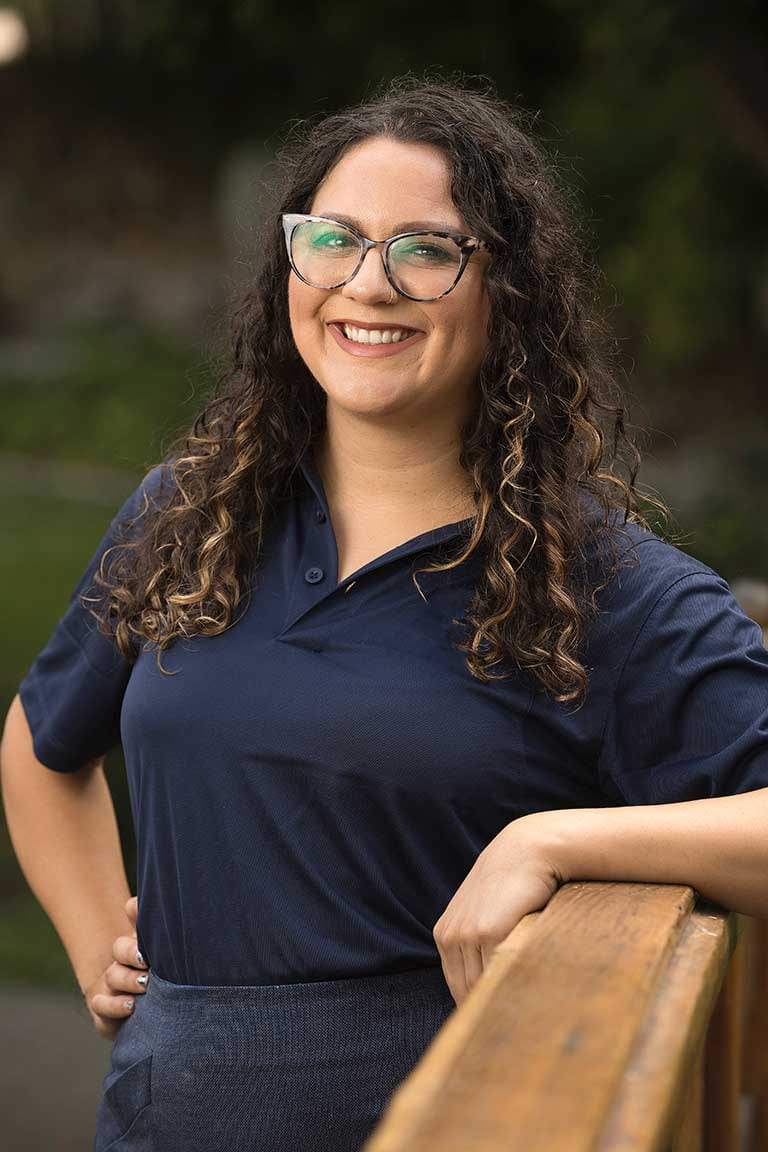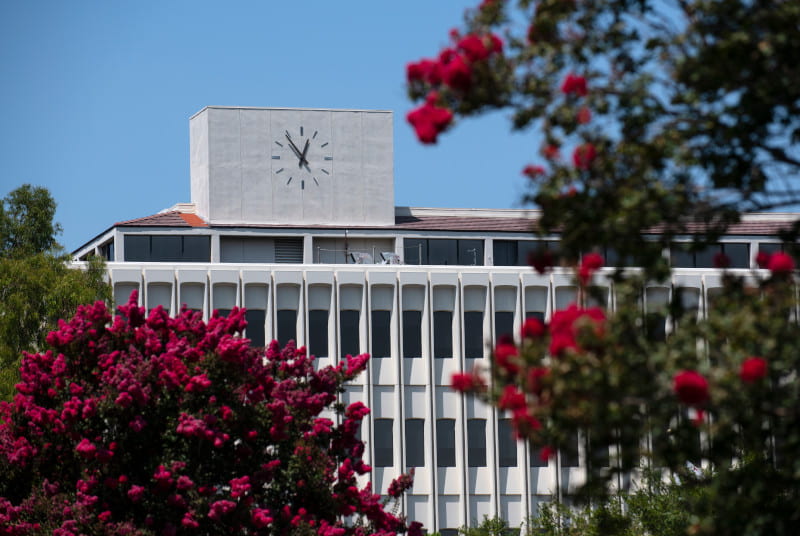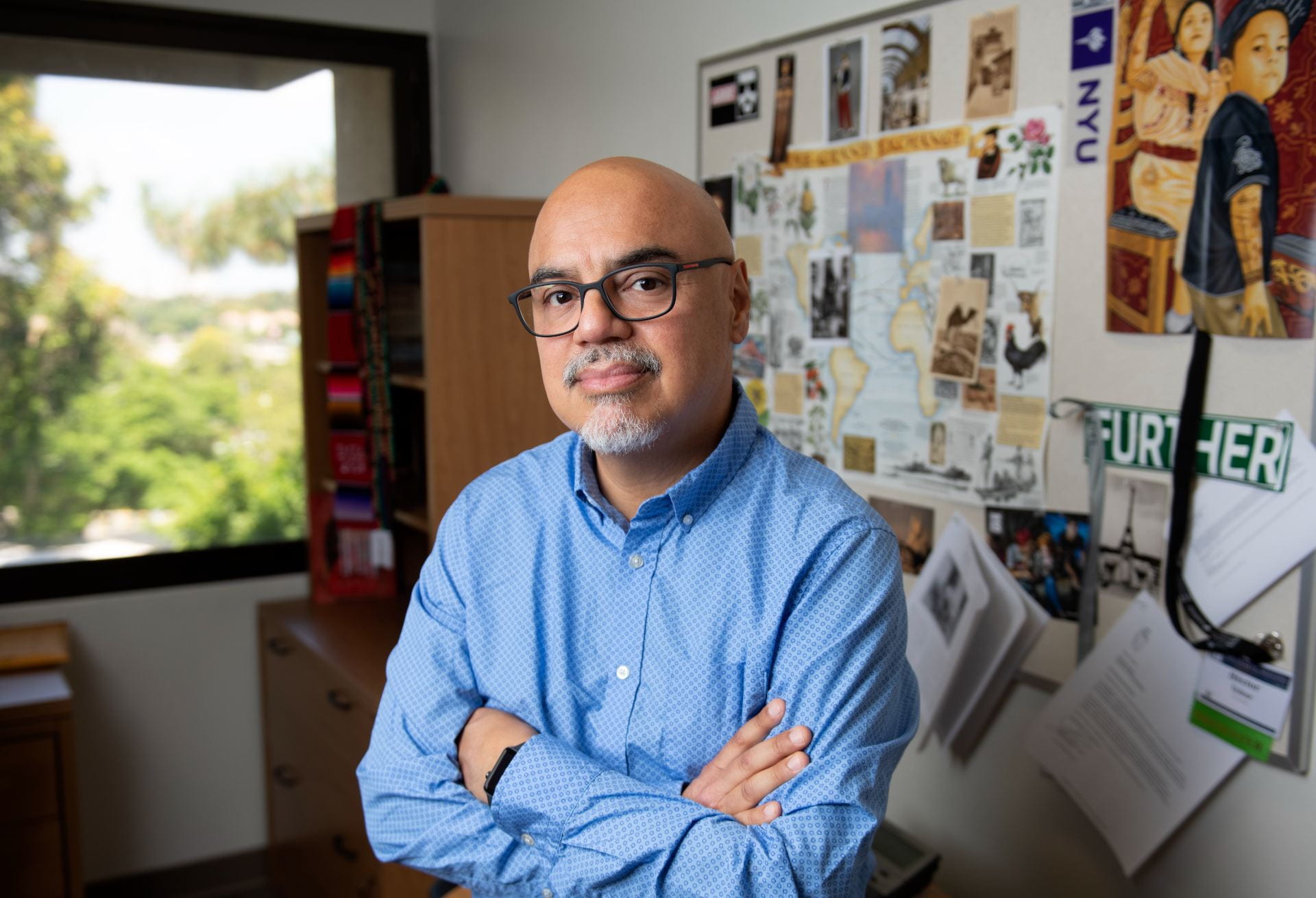Reviving treasures by once-renowned siblings
Unusual backstory leads to new exhibition at UCI’s Langson IMCA

If not for a coffee table in Pebble Beach, the intriguing artwork of three once-famous sisters wouldn’t be going on display this weekend – and their remarkable story might remain largely forgotten.
In the 1920s and ’30s, Margaret, Esther and Helen Bruton were known as the art-world equivalent of literature’s Bronte sisters. Raised in Northern California, they hobnobbed with such luminaries as Frida Kahlo, Henri Matisse and Ansel Adams. And their murals, paintings, mosaics and prints dazzled critics and the public alike.
After World War II, however, as the Brutons shifted directions and audience tastes changed, their star began to dim. The last group exhibition of the siblings’ art was in a Dallas Neiman Marcus store in 1954. Years later, some of the trio’s pieces were destroyed or credited to others.
Although the sisters continued working into the 1970s and got on the radar of several collectors and museums, their deaths went unheralded in the press, and their contributions faded into footnotes. Even their graves – in a family plot in Monterey – were unmarked.
Now UCI is helping to restore the Brutons’ legacy, thanks to a peculiar chain of events.
In 2018, a part-time reference librarian at Monterey Peninsula College was flipping through an interior design book when a Pebble Beach living room’s abstract coffee table caught her eye. The furniture was credited to Margaret Bruton.

Steve Zylius / UCI
“I was very curious,” says the librarian, Wendy Van Wyck Good. “So I started digging, and I became obsessed with the sisters’ story.”
She eventually tracked down the wills – and heirs – of the Brutons, who had no children and left their estates to the daughters of a cousin. One of the heirs had “a ton of stuff – sketchbooks, letters, photographs, business records and art that had never been seen in public,” Good says.
The research sparked a mini Bruton renaissance. In late 2021, West Margin Press published Good’s Sisters in Art, the first biography of the siblings since 1936. And that led to Good guest-curating “The Bruton Sisters: Modernism in the Making” at UCI’s Jack & Shanaz Langson Institute & Museum of California Art, which inherited 28 Bruton creations as part of an extensive trove bequeathed by collector Gerald Buck in 2017.
“UCI has the largest public institutional holdings of Bruton works,” says museum director Kim Kanatani.
When Good asked for permission to put some of the pieces in her book, Langson IMCA officials saw the potential for an illuminating exhibition.
“The lost story of how these sisters pushed the boundaries of modern art and experimented with diverse media is important and deserves recognition,” Kanatani says.
The show includes impressionist-style portraits, Byzantine-influenced mosaics, Western landscapes and a pair of abstract terrazzos that were recently found in the back of a garage after 40 years. Pebbles, jade, gold leaf, glass and eggshells are among the materials used by the sisters.
Also on display: a sheaf of archival items uncovered by Good, which dovetails with Langson IMCA’s mission to “contribute new scholarship on California art and make it accessible to the larger community,” Kanatani notes.

Last week, as installation crews readied the gallery, Good strolled through the rooms, sharing tidbits about the Brutons and their art:
- The siblings did murals and mosaics for cruise ships, hotels, churches, a zoo, universities (USC and UC Berkeley) and a military cemetery in the Philippines.
- For San Francisco’s Golden Gate International Exposition in 1939-40, the Brutons were paid a then-extravagant $20,000 commission (equal to about $400,000 today) to design and construct a sprawling, 57-foot-tall Masonite mural called “The Peacemakers,” which was demolished after the fair.
- During World War II, Esther Bruton worked as a riveter.
- Around 1940, Margaret Bruton abandoned her acclaimed painting career and began crafting hundreds of colorful, mortar-and-stone tabletops – including the one in Pebble Beach.
In addition to unveiling previously unseen Bruton art, ephemera and accoutrements, the UCI exhibition will feature an eight-minute biographical film, a raft of photos and several works by contemporaries of the siblings.

Steve Zylius / UCI
“The Bruton Sisters: Modernism in the Making” exhibit runs through May 6 at Langson IMCA’s interim space near John Wayne Airport, 18881 Von Karman Ave., then moves to the Monterey Museum of Art later this year.
If you want to learn more about supporting this or other activities at UCI, please visit the Brilliant Future website at https://brilliantfuture.uci.edu. Publicly launched on Oct. 4, 2019, the Brilliant Future campaign aims to raise awareness and support for UCI. The Jack & Shanaz Langson Institute & Museum of California Art plays a vital role in the success of the campaign. Learn more by visiting https://imca.uci.edu/support.




